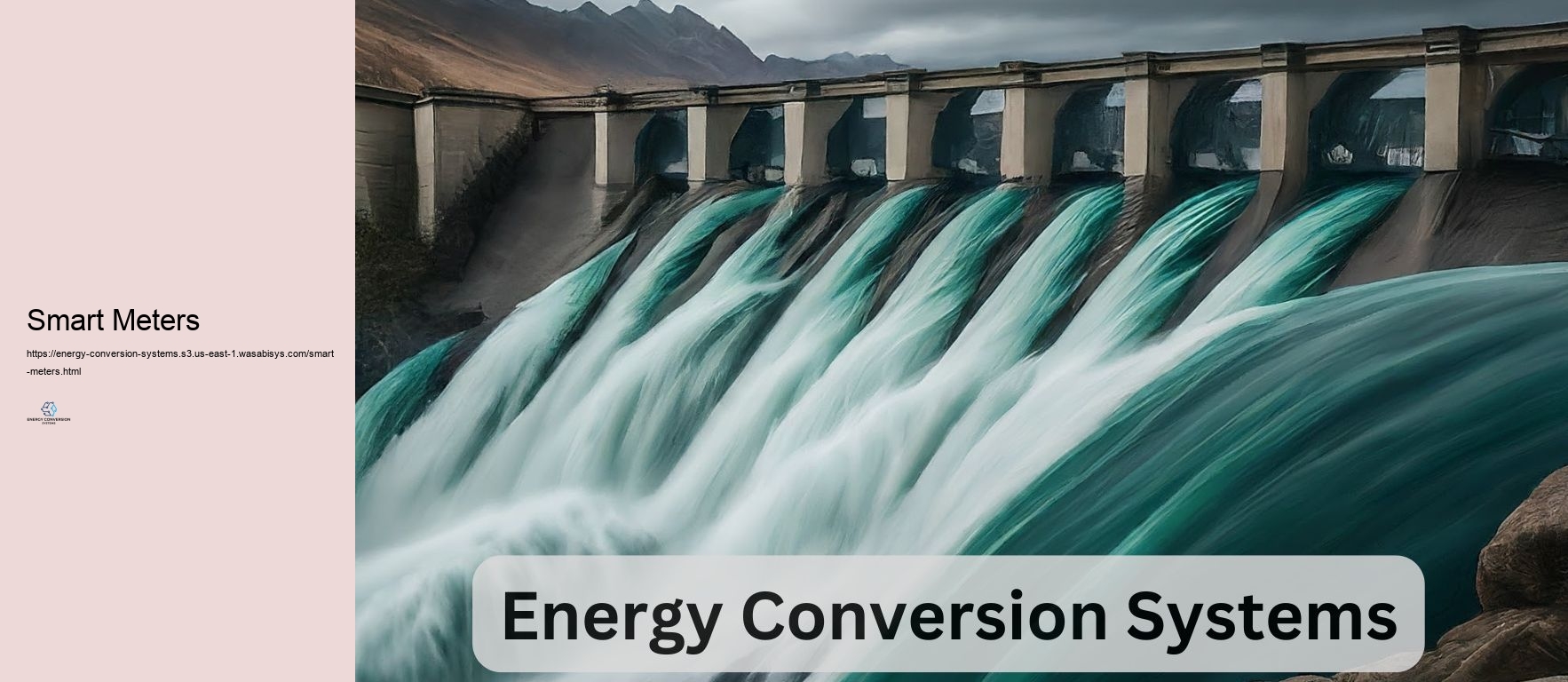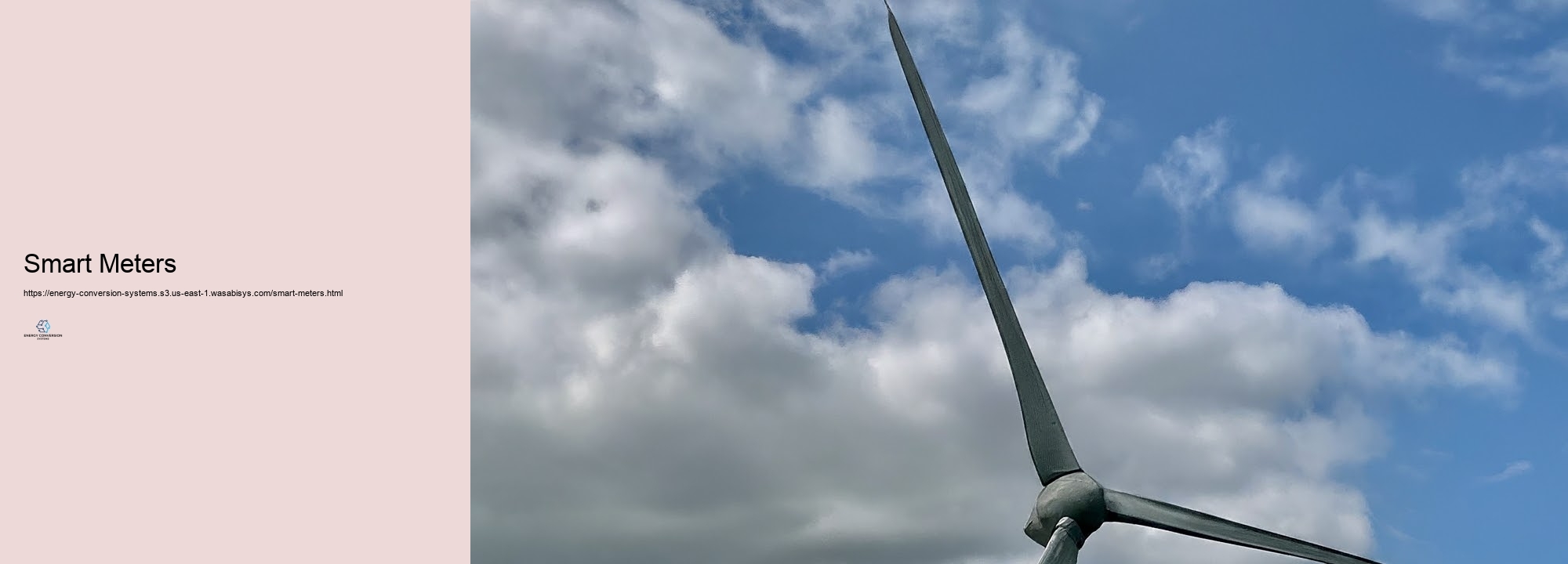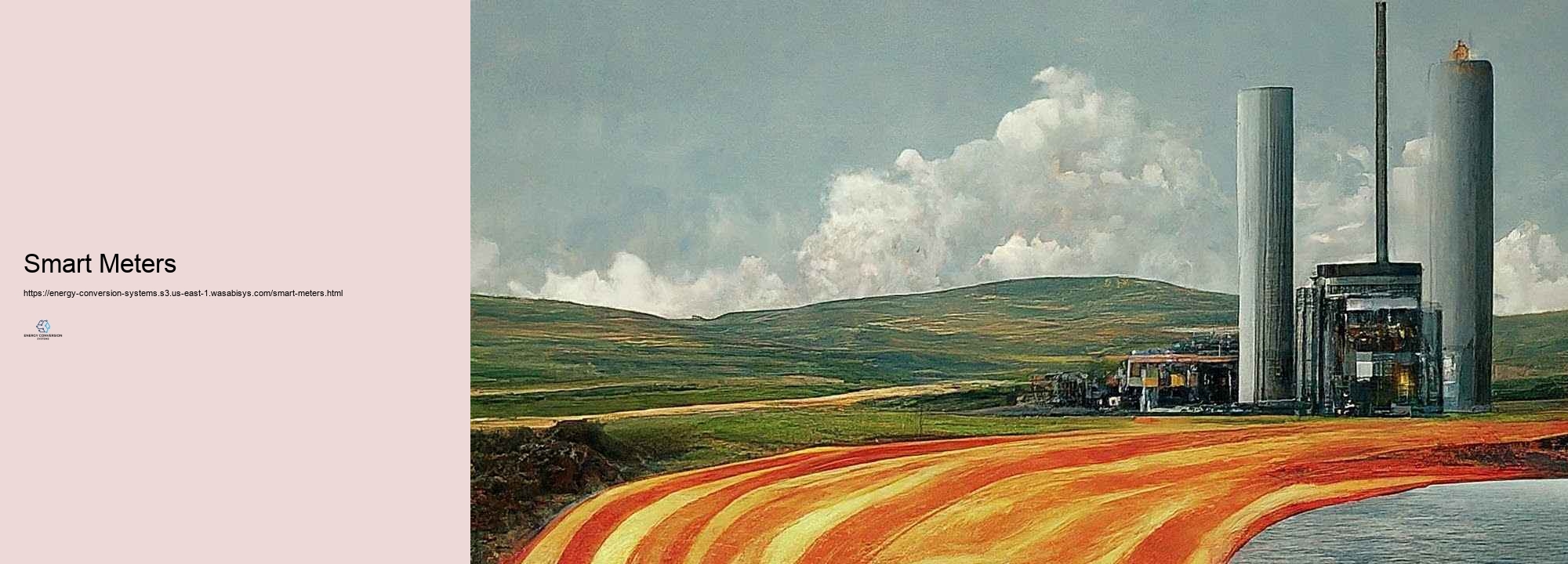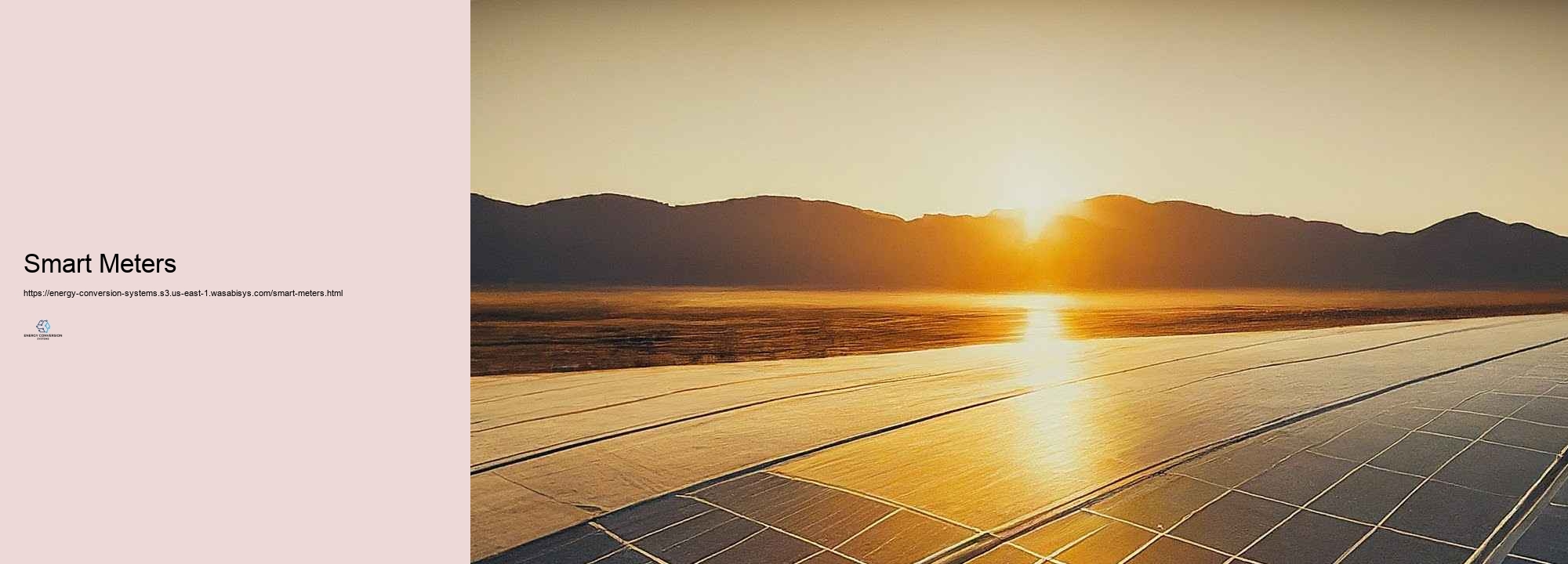

Energy conversion systems play a crucial feature in modern culture, enabling the transformation of various kinds of energy right into far better and sensible types. These systems are fundamental to power generation, transportation, industrial processes, and daily innovations. Understanding the concepts and applications of energy conversion systems is critical for engineers, policymakers, and any type of private thinking about the area of energy. At its core, energy conversion is managed by the legislations of thermodynamics. The extremely initially legislation of thermodynamics, which states that energy can not be created or damaged nevertheless just changed from one kind to an added, is the structure of all energy conversion systems. The 2nd regulation introduces the idea of intensifying and effectiveness, going over why no energy conversion procedure can be 100% effective.
Energy conversion advancements go to the forefront of changing specifically just how we harness and use energy, playing a vital function in the change in the direction of sustainable and reliable energy systems. From photovoltaics to gas cells, these advancements include a varied selection of tools that transform natural energy resources right into practical kinds, such as electric power, cozy, and gas. Each innovation runs distinctive principles and is fit to specific applications, using distinctive advantages and obstacles. Recognizing these modern technologies is essential for progressing energy options that address global energy needs while reducing environmental impact. Photovoltaics (PV) mean amongst one of one of the most extensively acknowledged kinds of solar power conversion. These systems usage semiconductor materials, normally silicon, to transform sunlight right right into electrical energy with the photovoltaic outcome. When sunshine strikes the surface of a PV cell, it thrills electrons, producing an electrical present. Solar or pv modern technology has advanced considerably for years, with growths in items and design bring about raised effectiveness and minimized expenses. Emerging technologies, such as thin-film solar batteries and all-natural photovoltaics, are pressing the boundaries of performance and convenience, making solar power a great deal even more accessible and flexible to different applications, from domestic roofing systems to large-scale solar ranches. Concentrated solar energy (CSP) is another solar power conversion innovation that varies from photovoltaics by making use of mirrors or lenses to concentrate sunlight onto a little area, frequently a receiver. Alternating Current Systems The focused light is traded warm, which is afterwards taken advantage of to produce heavy steam that drives a wind generator connected to an electric generator. CSP systems are especially trustworthy in locations with high direct sunshine and can consist of thermal energy storage area solutions to supply power even when the sun is not shining. This capability to save energy as cozy makes it possible for CSP plants to offer a much more steady and reliable power outcome contrasted to regular solar PV systems. Gas cells are a practical energy conversion technology that generates power using an electrochemical response, frequently requiring hydrogen and oxygen. Unlike combustion-based power generation, gas cells produce power without melting fuel, creating lower discharges and higher performance. There are various kind of fuel cells, each identified by the electrolyte used and the operating temperature array. Polymer electrolyte membrane layer (PEM) gas cells, for instance, are recognized for their high power density and are commonly utilized in transport applications, such as gas cell lorries. Strong oxide fuel cells (SOFCs), on the different other hand, run at greater temperature levels and suitable for stationary power generation and industrial applications. Hydroelectric power is a reputable energy conversion technology that harnesses the kinetic energy of flowing water to produce electrical energy. By guiding water via wind turbines, hydroelectric plants transform the energy of moving water right into power, which is after that transformed right into electrical energy by generators. This modern technology is very reputable and can offer a consistent and relied on power supply, making it a keystone of renewable energy accounts in a number of countries. Nevertheless, the ecological effect of huge hydroelectric work, such as environment disturbance and adjustments to water communities, demands cautious preparing and checking. Wind energy conversion contemporary technologies catch the kinetic energy of wind making use of turbines, which transform it right into mechanical energy and ultimately right into power. Wind wind turbines are typically mounted in areas with strong and constant wind patterns, such as coastal regions and open plains. Developments in wind generator design, such as bigger rotor diameters and taller towers, have actually drastically enhanced the performance and capability of wind power generation. Offshore wind ranches are additionally obtaining grasp, using the possible for considerable energy generation with limited land usage effect. Geothermal energy conversion make the most of the Earth internal cozy to generate electric power and supply direct heating applications. Geothermal power plants usage vapor or cozy water from below ground storage tanks to drive wind generators and produce power. This advancement is very reliable and can offer a consistent power supply, as geothermal sources are not subject to the irregularity seen in solar and wind energy. Additionally, geothermal systems can be used for straight heating applications, such as district heating and greenhouse farming, much more improving their versatility. Biomass energy conversion entails utilizing natural products, such as plant and pet waste, to generate warmth, electrical energy, or biofuels. Biomass can be traded energy via different processes, including burning, gasification, and anaerobic food digestion. This modern-day innovation supplies the advantage of utilizing waste items and can add to misuse administration solutions. Nevertheless, the sustainability of biomass energy depends upon the resource of the biomass and the approaches made use of for growing and harvesting. Tidal and wave energy conversion innovations harness the energy of sea fads and waves to generate power. Tidal nuclear power plant usually take advantage of batteries or undersea wind generators to document the energy of moving water, while wave energy converters eliminate energy from the area motion of waves. These developments are still in the creating phases however hold promise for providing a trustworthy and near resource of renewable resource, specifically for coastal areas. The landscape of energy conversion modern-day technologies varies and swiftly advancing, driven by the need for lasting and effective energy remedies. From photovoltaics and concentrated solar energy to gas cells and hydroelectric systems, each innovation offers unique benefits and problems. By advancing these contemporary innovations and incorporating them into the worldwide energy system, we can relocation in the direction of a much more lasting and durable energy future, lowering our reliance on fossil fuels and reducing eco-friendly effect. As {research and development continue to press the limits of what is feasible, the possible for inventive energy conversion services to modification our energy landscape stays substantial and encouraging.
Energy conversion systems are crucial to contemporary society, playing a crucial obligation in changing raw energy resources into useful power that gas homes, markets, and transportation. These systems incorporate a large array of innovations and processes created to transform energy from one type to another, such as changing chemical energy in gas to power in engines or electric energy in nuclear power plant. A detailed evaluation of the critical elements in energy conversion systems discloses the ins and out and elegance involved in successfully using and utilizing energy resources. Comprehending these elements is necessary for taking full advantage of performance, enhancing efficiency, and decreasing environmental effect. The beginning aspect of any sort of energy conversion system is the energy resource, which can be environmentally friendly or non-renewable. Renewable energy sources include solar, wind, hydroelectric, geothermal, and biomass, while non-renewable sources incorporate nonrenewable gas resources like coal, oil, and gas, along with atomic energy. The alternative of energy resource substantially affects the design and operation of the conversion system, as each source has unique top qualities, such as availability, energy thickness, and ecological impact. For example, solar power systems trust photovoltaic cells or solar thermal lovers to record sunlight, while fossil fuel-based systems use shedding treatments to launch energy kept in chemical bonds. At the heart of any sort of energy conversion system is the energy conversion tool, which transforms the primary energy resource into a different type of energy. Typical conversion devices consist of wind turbines, engines, generators, and fuel cells. Turbines, made use of in both nonrenewable fuel source and renewable energy systems, convert kinetic energy from vapor, water, or wind into power, which is after that transformed right into electrical energy by generators. Inside burning engines, prevalent in transportation, transform chemical energy from fuels right into power with handled explosions. Fuel cells, on the various other hand, right transform chemical energy from hydrogen or different other gas right into electric energy with electrochemical reactions, offering high efficiency and reduced wears down. Heat exchangers are essential elements in many energy conversion systems, especially those including thermal procedures. These devices assist in the transfer of warm in between 2 or much more fluids without mixing them, boosting the performance of energy conversion. In nuclear power plant, heat exchangers are utilized to transfer cozy from melting gases to water, producing heavy steam that drives turbines. In a/c systems, they transfer warmth in between indoor and outside settings, managing temperature and boosting energy efficiency. The style and product option for cozy exchangers are important for optimizing warmth transfer rates and lessening energy losses. Control systems are vital for the secure and reliable procedure of energy conversion systems. They monitor and manage numerous standards, such as temperature level, stress, circulation rate, and voltage, making certain that the system operates within defined limitations and responds properly to changes demanded or running problems. Advanced control systems utilize noticing units, actuators, and formulas to make best use of efficiency, increase integrity, and decrease energy intake. In modern-day nuclear power plant, electronic control systems make it possible for real-time checking and automation, allowing operators to make data-driven choices and execute preparing for maintenance techniques. Energy storage space elements are significantly necessary in energy conversion systems, particularly those trusting recurring eco-friendly resources like solar and wind. Storage space systems, such as batteries, flywheels, and pumped hydro storage room, store excess energy produced throughout periods of reduced demand and launch it when requirement is high, making certain a steady and trustworthy power supply. The combination of energy storage space boosts the flexibility and durability of energy systems, permitting much much better whole lots administration and lowering reliance on fossil fuel-based back-up power. The advancement of sophisticated storage space modern innovations, such as lithium-ion and solid-state batteries, remains to drive improvements in energy thickness, performance, and cost-effectiveness. As soon as energy is traded a valuable kind, it has to be sent and dispersed to end-users. Transmission and blood circulation systems include a network of transformers, high-voltage line, substations, and flow lines that supply electrical power from nuclear power plant to homes, organizations, and industries. Dependable transmission and blood circulation are crucial for decreasing energy losses and making certain a trustworthy power supply. Improvements such as high-voltage right existing (HVDC) transmission and sensible grid modern technologies are improving the performance, capability, and dependability of power networks, facilitating the mix of renewable energy sources and boosting grid administration. Environmental protection systems are essential to energy conversion systems, specifically those consisting of burning procedures. These systems are developed to minimize the environmental result of energy conversion by decreasing exhausts of contaminants such as sulfur dioxide, nitrogen oxides, particle issue, and carbon dioxide. Technologies such as scrubbers, critical catalytic decline (SCR), and carbon capture and storage room (CCS) are used to record and deal with exhausts prior to they are launched into the feel. The implementation of environmental protection systems is necessary for compliance with ecological regulations and for decreasing the result of energy conversion on air top quality and atmosphere adjustment. Improving the performance of energy conversion systems is a key focus for lowering energy intake and ecological effect. Efficiency improvements can be achieved using countless means, such as improving the format and treatment of conversion devices, applying innovative products and finishes, and integrating waste heat recuperation systems. Integrated cycle nuclear power plant, which make use of both gas and vapor wind turbines, exemplify performance improvements by capturing and utilizing waste heat from gas generators to generate extra electrical power. Ongoing {research and development efforts continue to be to look into new products, innovations, and treatments that can even more boost the performance and sustainability of energy conversion systems. The key elements of energy conversion systems are essential to transforming raw energy resources into useful power successfully and sustainably. By comprehending and optimizing these elements, we can boost the performance, dependability, and environmental compatibility of energy systems, pleasing the expanding requirement for neat and efficient energy choices. Inverters As technical technologies remain to progress, the capability for development in energy conversion systems keeps big, providing chances to fix the challenges of energy safety, climate change, and sustainable growth.
Discover the latest advancements in energy conversion systems, from solar and wind to fuel cells and biomass! Learn how these innovations are driving sustainable energy solutions for a cleaner, more efficient future.https://t.co/9SfMjPHIu9
— Turbine Training And Operation (@turbinetraine) August 25, 2024


Improving effectiveness in energy conversion is a critical goal in the search of lasting and affordable energy manufacturing. As international energy demand continues to increase, boosting the performance of energy conversion procedures has in fact come to be significantly essential for minimizing source consumption, reducing ecological results, and making sure energy protection. This venture incorporates a variety of techniques and modern technologies throughout numerous energy markets, from conventional fossil fuel-based systems to renewable resource technologies.
The assimilation of renewable resource resources right into conversion systems is a transformative method boosting the global energy landscape. As the world seeks lasting solutions to meet increasing energy requirements while reducing eco-friendly influences, the obligation of renewable resource in conversion systems happens seriously important. This combination involves integrating sustainable resources such as solar, wind, hydro, and biomass with typical energy systems to create hybrid systems that improve energy making, boost effectiveness, and reduce carbon discharges. By leveraging the staminas of both eco-friendly and traditional energy sources, these systems supply a pathway to a much more durable and lasting energy future. Hybrid energy systems most likely to the center of integrating renewable energy resources right into conversion systems. These systems incorporate numerous energy sources to supply a stable and trustworthy power supply. For example, solar panels can be paired with wind wind turbines to match each other, as solar energy is plentiful throughout the day while wind energy can be capitalized on throughout the evening or throughout bleak days. By incorporating these resources, crossbreed systems can lower dependence on nonrenewable gas sources, lower greenhouse gas discharges, and give an additional consistent energy supply. Furthermore, hybrid systems often consist of energy storage solutions, such as batteries or thermal storage room, to maintain excess energy produced during peak manufacturing times for usage during periods of reduced renewable energy availability. This capability enhances the reliability and versatility of the energy supply, making it extra resistant to variants in renewable energy generation. The successful combination of renewable resource resources right into conversion systems also depends greatly on technologies in grid integration and smart contemporary technologies. Modern power grids are establishing to fit the variable nature of renewable energy sources. Smart grids, outfitted with advanced sensing units, communication technologies, and automation, make it feasible for real-time tracking and monitoring of energy blood circulations.


Energy conversion system design is an elaborate location that encounters numerous barriers in the quest for much more effective, lasting, and economical choices. As international energy demands remain to boost and eco-friendly issues increase, developers and scientists are charged with creating cutting-edge strategies to do away with these difficulties. This summary uncovers the important barriers in energy conversion system layout and the occurring solutions that are forming the future of energy development. Amongst the main challenges in energy conversion system format is enhancing performance. All energy conversion processes include some degree of energy loss, as established by the policies of thermodynamics. For thermal systems, such as nuclear power plant, this ineffectiveness is often materialized as waste heat. Resolving this barrier calls for a facility technique. Advanced products that can sustain greater temperature levels and pressures are being developed, allowing far more dependable thermodynamic cycles. As an example, supercritical and ultra-supercritical vapor cycles in coal-fired nuclear reactor can achieve greater effectiveness by operating at extremely heats and stress. In inner burning engines, improvements in melting chamber layout, gas shot systems, and exhaust gas recirculation are pressing the limitations of performance. An added considerable trouble is the intermittency and abnormality of renewable energy resources. Solar and wind power, while neat and progressively cost-competitive, are not consistently used. This irregularity poses difficulties for grid security and dependability. Solutions to this challenge contain the growth of innovative energy storage systems, such as grid-scale batteries, pumped hydro storage, and arising technologies like blood circulation batteries. Furthermore, the design of crossbreed systems that integrate various energy sources (e.g., solar-thermal crossbreed plants) can help reduce the intermittency trouble. Smart grid advancements and demand response systems are likewise being established to much better handle the equilibrium in between variable supply and need. Ecological influence is a vital factor to consider in energy conversion system design. Decreasing exhausts, particularly from fossil fuel-based systems, is a considerable barrier. Solutions contain the advancement of carbon capture and storage room (CCS) technologies, which intend to document CARBON DIOXIDE discharges prior to they enter into the environment. Advanced burning contemporary innovations, such as oxy-fuel burning and chemical looping burning, are being researched to promote a lot more trusted carbon capture. For renewable resource systems, difficulties include lessening the environmental effect of producing processes and dealing with issues like wild pets protection in wind cattle ranch format. Scalability and cost-effectiveness existing repeating challenges in energy conversion system design. Numerous appealing innovations that function well in research laboratory arrangements face troubles when scaled as much as industrial levels. As an example, gas cells have shown fantastic prospective for efficient energy conversion, yet obstacles in scaling up manufacturing and lowering expenses have limited their extensive promoting. Solutions involve research study right into new materials and creating treatments to reduced costs and enhance durability. Furthermore, modular style methods are being found to facilitate less complicated scaling and alteration of energy systems. The mix of different energy conversion systems settings an additional substantial problem. As the energy landscape happens extra diverse, with a mix of standard and green resources, making systems that can engage effectively becomes crucial. Solutions include the improvement of cutting-edge control systems and power electronics that can take care of the ins and outs of including various energy resources. Digital nuclear power plant concepts, which aggregate and coordinate distributed energy sources, are becoming an alternative to this mix difficulty. Product constraints existing continuous challenges in energy conversion system format. Numerous innovative energy modern-day innovations requirement unusual or expensive items, which can restrict their scalability and financial expediency. As an example, some high-efficiency solar batteries depend on uncommon world elements. Solutions to this obstacle include research study right into various products, such as earth-abundant aspects for solar cells, and the growth of recycling innovations to recuperate and recycle vital items from shut off systems. Thermal management is an important challenge in numerous energy conversion systems. Induction Generators Reliable cooling down is crucial for keeping effectiveness and sturdiness, particularly in high-temperature applications like gas generators or focused solar power systems. Solutions contain sophisticated a/c modern-day innovations, such as closed-loop vapor cooling down for gas generator blades, and the growth of brand-new products with far better heat-resistant homes. In digital systems, developments in heat sink format and using phase-change items for thermal management are being had a look at. Energy storage remains to be a considerable obstacle, specifically for applications needing high energy density or quick charge/discharge cycles. While lithium-ion batteries have actually seen considerable enhancements, they still face limitations in energy thickness and cycle life. Solutions being uncovered include the advancement of solid-state batteries, which assurance higher energy thickness and improved protection, and research right into distinct chemistries like lithium-sulfur or lithium-air batteries. For grid-scale storage space, circulation batteries and sophisticated mechanical storage systems (like compressed air energy storage room) are being developed. The challenge of system dependability and upkeep is essential, particularly as energy systems happened a lot more intricate and distributed. Guaranteeing lasting integrity while minimizing maintenance requirements is vital for the economic expediency of energy conversion systems. Solutions consist of the growth of sophisticated tracking and analysis systems, typically leveraging professional system and artificial intelligence algorithms to expect and protect against failures. The concept of self-healing systems, which can promptly identify and resolve tiny issues, is likewise being found. Adaptability in energy conversion systems is winding up being increasingly crucial as energy grids development. Systems demand to be able to respond swiftly to changes popular and supply, particularly with the enhancing infiltration of variable renewable energy resources. Solutions consist of the development of much more adaptable thermal nuclear power plant that can boost and down swiftly, using energy storage room systems to provide grid remedies, and the implementation of requirement response contemporary innovations that can modification energy intake based upon grid troubles. The area of energy conversion system design faces numerous challenges in the pursuit of extra efficient, lasting, and trusted energy alternatives. Nevertheless, these obstacles are driving improvement throughout a wide variety of modern innovations and techniques. From advanced materials and distinct system layouts to the integration of digital advancements and wise control systems, the services being produced are not simply addressing existing obstacles yet likewise paving the way for the future generation of energy conversion systems. As {research and development proceed, these remedies ensure to improve the international energy landscape, moving us towards a far more lasting and trusted energy future.
The influence of energy conversion systems on environmental sustainability is extensive and diverse, influencing whatever from greenhouse gas discharges and source fatigue to ecosystem health and wellness and biodiversity. Smart Meters As the worldwide need for energy stays to climb, driven by population development and monetary advancement, the requirement for lasting energy options comes to be considerably urgent. Energy conversion systems, which change raw energy sources into useful types such as electric energy, cozy, and gas, play a vital duty in this change. By checking out the environmental influences of various energy conversion contemporary innovations, we can far better recognize their contributions to sustainability and identify pathways for improvement.

Energy conversion systems are technologies or processes that transform one form of energy into another, such as converting solar energy into electricity or mechanical energy into electrical energy.
Common types of energy conversion systems include solar photovoltaic panels, wind turbines, fuel cells, hydroelectric power systems, and geothermal energy converters.
Energy conversion systems improve efficiency by optimizing the process of converting energy from one form to another, reducing waste, and enhancing the overall output of usable energy.
Energy conversion systems are crucial in renewable energy as they enable the transformation of natural energy sources like sunlight, wind, and water into electricity, supporting sustainable power generation.
Challenges include optimizing efficiency, minimizing energy loss, integrating with existing grids, managing costs, and ensuring reliability and sustainability of the energy sources used.